After finishing a morning trip to Digboi’s Oil Museum, we continued our onward journey to the other places in Upper Assam. Two options were there in our mind…first was to reach Tezu in Arunachal Pradesh via Namsai, Parshuram Kund and second was to reach Roing, also in Arunachal Pradesh via Dhola-Sadiya Bridge. We already got the Inner Line Permit to enter in Arunachal Pradesh from both the routes.
Check here about Inner Line Permit: How To Get Inner Line Permit (ILP) for Arunachal Pradesh?
Later, while moving with the help of Google Map on the unknown roads in Upper Assam, we decided to visit Roing via Dhola-Sadiya Bridge on that day. On the next day, we could try to reach Tezu from Roing and then we could continue moving onward to Dibrugarh via Parshuram Kund and Namsai.
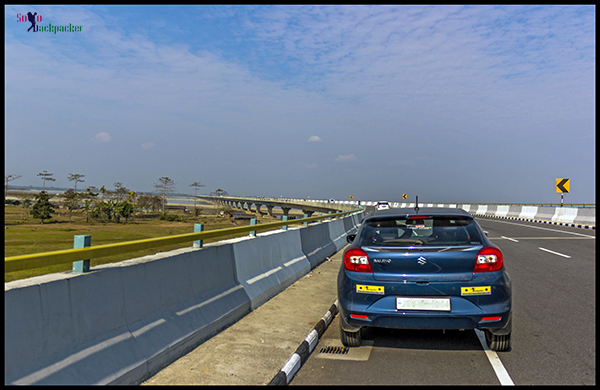
Journey Through Tinsukia District
From Digboi, we initially moved on the main highway to Sivasagar and then started navigating towards a place with a strange name Doom Dooma. The paved tarmac was passing through the small villages and extensive agricultural bases in the hinterland of Tinsukia district. When the name Tinsukia pop ups somewhere, the first thing that strike in mind is ULFA.
The name of Tinsukia district is synonymous to the Oil and the ULFA. Until few years ago, it was the main activity center of ULFA outfit and still remains in the headlines due to the extremist activities. Just two days prior to our trip, about a dozen oil tankers were set on the fire and a major industrial establishment was attacked by a group of militants. Passing through the remote villages in the same Tinsukia district gave us a lot of goosebumps, where fear of unknown was a constant companion.
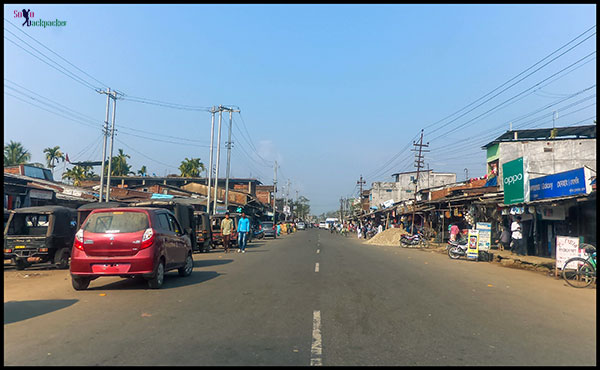
After few hours of drive through the occasionally appeared small clusters of settlement, we reached to a broad corridor of the tea plantations, the money making machine of Assam. One after another, as far as we could see, there was the tea estates all around. Almost all of these estates were set up during the British Era. It was beginning of the tea industry that fueled the economic growth of Upper Assam and also led to the development of its oil industry and coal industry.
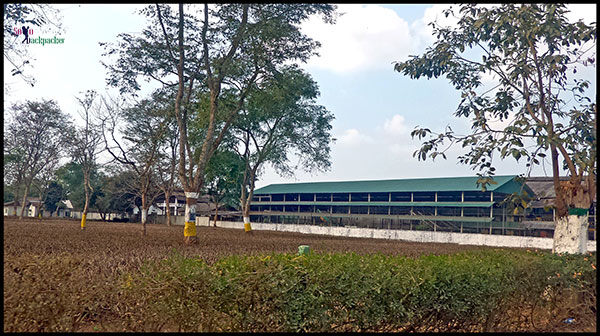
Tea Gardens in Doom Dooma
We kept moving towards Doom Dooma on a narrow road through the plains carpeted with verdant plantations of tea. Doom Dooma is recognised for having some of the best and most beautiful tea gardens across the globe. Owing to the presence of large tea estates and big names in the field, it is regarded as a prominent hub of tea trade in the country. Big giants like Hindustan Unilever and McLeod Russel owned many tea gardens in this area. The magical aroma of tea produced at tea gardens in Doom Dooma attracted global tea giants to establish their business in a small town of Upper Assam.
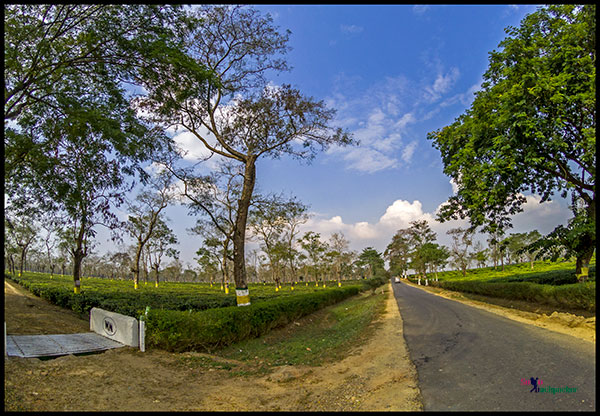
But, all was not that shiny at the tea gardens in Doom Dooma. When the tea industry was taking shape during the British Raj, the required manpower was not available in this part of Assam. The contractors, known as Coolie Catchers, sold the dream of Tea productions to the uneducated people in Orissa, Bihar, Andhra Pradesh and Madhya Pradesh and lured them to work at the tea gardens. They were told that tea was a plant with the golden value and working at the tea gardens would make them rich enough.
With a lot of dreams, when the workers arrived at the tea gardens, they found themselves in the captivity, working endlessly and living inhumanly. The living conditions were so deplorable that thousands of workers died because of Cholera, Dysentery and Malaria. Hundred plus years later, the life is still hard for the workers at the tea gardens. Irony is that they produced the biggest cash crop of India to fetch million of dollars every year.
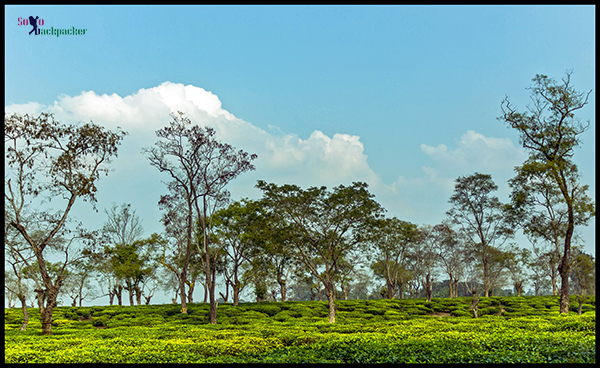
It was the money making business of Tea at Doom Dooma that made it a matter of interest for the global giants of Tea Business, and for the same reason it became a hot-favourite for the ULFA extremists. During the 1990s, at the peak of its power, ULFA extorted huge sum of money from the tea gardens to raise its war fund. They also got immense support from the local communities who was under impression that the ULFA was at least stopping the drift of money from their homeland. At a point of time, the ULFA was so powerful that it was running a parallel government in the industrial heartland of Assam.
However, the time had taken a U-turn suddenly and it was the same players from the tea business, who pulled down the final curtain for ULFA. When ULFA’s demand for money became unbearable, Hindustan Unilever decided to wrap up its business from Doom Dooma. Before saying a final Good Bye, the company wanted to know the stand of India’s Central Government on this issue. The company pleaded to the Indian Government through its headquarter in London.
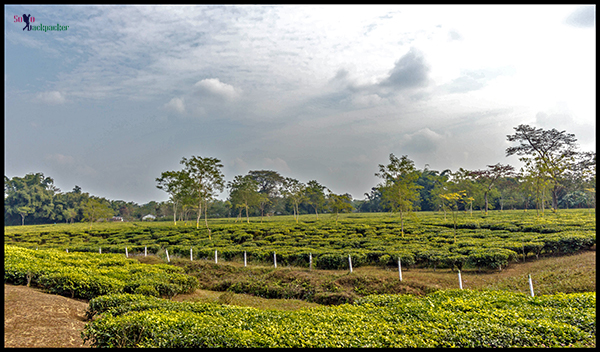
After initial hesitation, the Central Government decided to launch a major crackdown against the ULFA. It happened, and in a total filmy style. The command centers were setup in London, Delhi and Kolkata to airlift the officers and employees of Unilever on a top secret mission. An Air India B737 landed secretly at the small air strip of Doom Dooma, but got a technical snag. On-board passengers lived their moments of a hell till the snag rectified and aircraft departed safely.
Subsequently, the AGP government in Assam got dismissed, the President’s rule got imposed and the Indian Army launched it’s biggest peace time operation to blow out the ULFA extremists, bringing the end of an era in Assam. The little known town of the beautiful tea estates suddenly became a major hotspot of Indian politics.
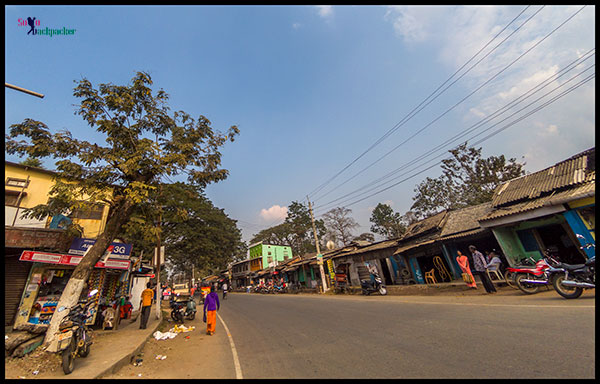
In the 1990’s, Indian Army launched to major operations, Operation Bajrang and Operation Rhino, one after another to deal with the extremist activities of the ULFA. The strong action against the ULFA provided a much needed relief to the Tea industry and the tea business started growing again in Doom Dooma. It is still a major center of tea production, and big giants still fetching a lot of money from their tea estates. But, not much got changed in the lifestyle of plantation workers. Majority of population settled around the villages and towns of these tea estates came as a migrated workers from Bihar, Jharkhand, Madhya Pradesh etc and most of them are still working as the bonded labourers with no minimum wages or facilities.
In the recent time, many tea estates have adopted the idea of Tea tourism in the line of heritage tourism. They are offering their colonial style bungalows on the rent to the tourists, where the lifestyle of the English Raj can be enjoyed by staying in the old bungalows.
Bhupen Hazarika Setu (Dhola Sadiya Bridge)
From Doom Dooma, we continued our journey towards Roing in Arunachal Pradesh. In order to reach Roing, we were supposed to cross the Dhola-Sadiya Bridge on the Lohit River. The bridge was constructed and opened to the general public last year only, so we were excited to visit the bridge also. Earlier, there was no bridge to connect Dhola, a small village on the southern side of Lohit River, with Sadiya, another village on the northern side of Lohit River.
Read here about Roing: Trip to Roing in Arunachal Pradesh
Prior to the construction of this bridge, the river had to be crossed by big ferries to travel from Dhola to Sadiya. Separated by a river, the journey from Dhola to Sadiya used to be 4-6 hours long depending on the season. In the rainy days, when the river was on its full boom, crossing the river by boats was a very risky affair. During the heavy rain, many boats did not even operate from across the river.
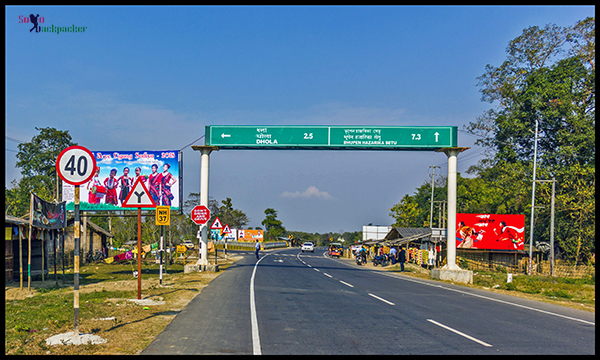
Now, with the opening of Dhola-Sadiya Bridge, actually named as Bhupen Hazarika River Bridge in the honour of Bhupen Hazarika, the journey from Dhola to Sadiya is a matter of few minutes only. The Eastern part of Arunachal Pradesh is now more accessible due to this bridge on the Lohit River.
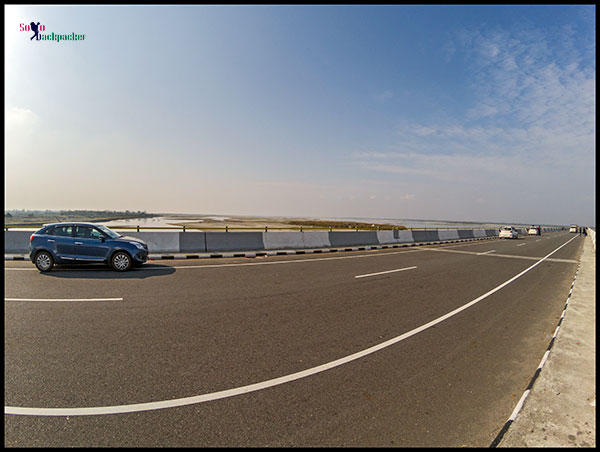
Apart from being India’s largest river bridge, this bridge is also having a strategic importance from the defence point of view. That is why the Prime Minister himself came to inaugurate the bridge and the media also covered it with much highlights. For all these reasons the bridge has become a center of excitement for the tourists. A lot of people from adjacent areas regularly visit the Bhupen Hazarika Bridge.
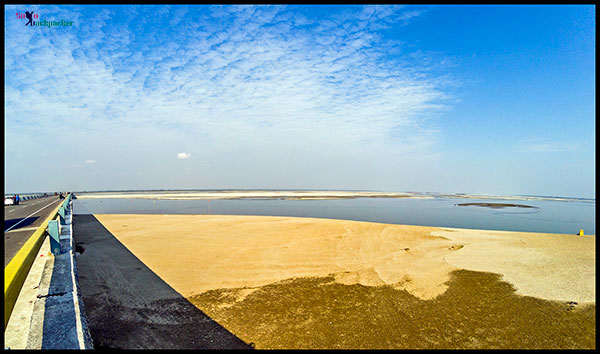
Under the bridge, 2-3 groups were enjoying the picnic on the bank of the River. Winter is an ideal season, when most of the local population venture out to the picnic spots on the river banks. They used to cook foods at the spots and dance carelessly on the rhythms of Bollywood songs. During the Monsoon, when fast moving water from the mountain descends in the plains, the same river roared fiercely to sweep away everything coming to her way. Then, there is no picnic, no dancing and no singing, the people only struggles to save their life.
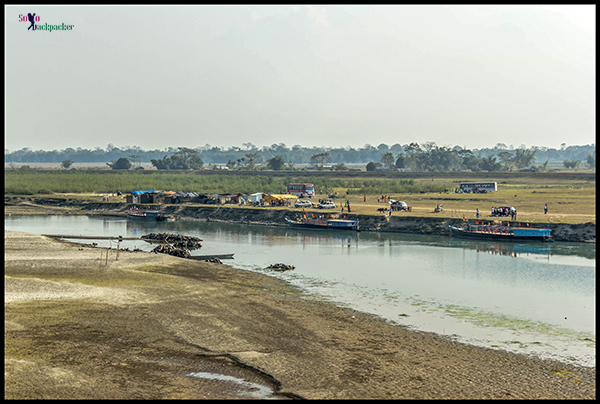
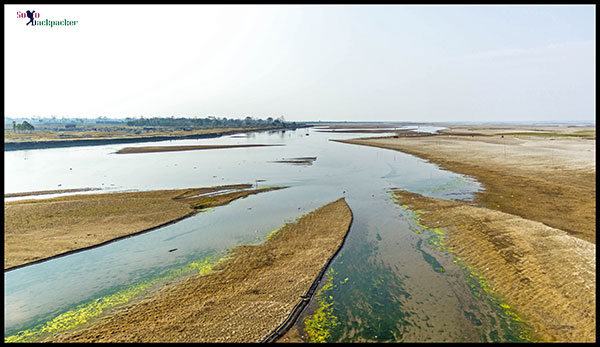
Few small boats were still standing next to the picnic spot. Before construction of the bridge, these boats were used to ferry people across the river, but now they are only in the memories, insignificant in the current state of the development. Many local people from Mallah (Boatmen) community lost their livelihood without any alternative plan, but this is the cost of development that few of us have to pay always everywhere.
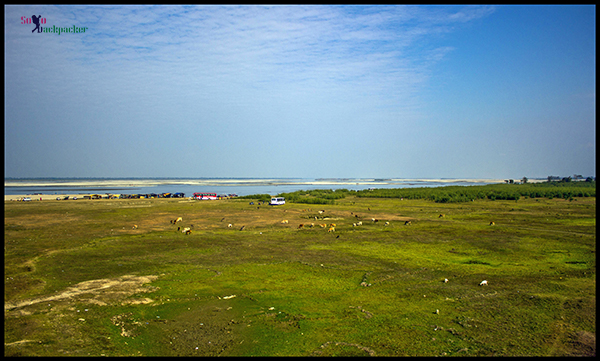
Legacy of Sadiya
After crossing the bridge, we entered in the territory of Sadiya, the last significant town of Assam on the northern bank of Lohit river. From historical point of view, Sadiya remains an important political center in the history of Assam. It was the ancient capital of Chutia Kingdom established by the second Sutiya ruler Ratnadhwajpal in 1248 and remained as the capital till 1524. The extensive remains of buildings and fortifications are still visible at Sadiya, few kms off track from the newly built road passing through Dhola-Sadiya Bridge.
अरुणाचल प्रदेश में एक रोमांचक कार यात्रा : रोइंग से पासीघाट का सफ़र
Today, we know Dibrugarh as the tea city of India, but it was Sadiya, from where it all was started during the British Era. The tea plants were abundantly available in the forests of Upper Assam. The indigenous people of Assam used to drink the brew even before its discovery. In 1821, Robert Bruce an Englishman discovered the tea plants from the forests with the help of Beesa Gam, a Singpho Chief. In 1824, his younger brother Charles Alexander Bruce planted tea plants in front of his bungalow at Sadiya on the experimental basis and rest is only a history for the tea industry in Assam. Sadiya is also famous as the birthplace of Bhupen Hazarika.
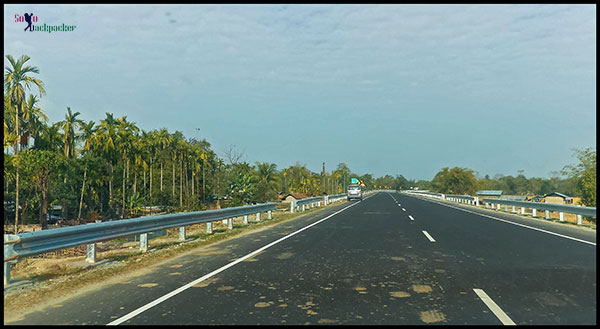
After crossing Majgaon, a road bifurcates towards Tezu. Moving on that road, one can reach Tezu in one and half hour. From Tezu, it is possible to move forward towards Parasuram Kund, cross another bridge on Lohit River to reach Wakro and Namsai. However, we didn’t turn towards Tezu and continued our journey to the north, towards the beautiful town of Roing. Our destiny brought us to the land of roaring rivers in Arunachal Pradesh, where, on the following day, we had one of the craziest adventure of our life.




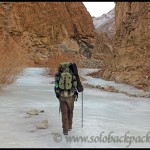


My Doom Dooma Connection: I like your story and thanks for sharing the nice photo images of your trip. I arrived in Doom Dooma at the Aviation Research Centre airfield riding in a World War II, The Curtiss C-46 Commando, a twin-engine transport aircraft. The Americans built several such airfields in the Northeast Assam as the Japanese advanced towards India. During 1972-73, I remember Doom Dooma as a sleepy little town with one movie theatre. My Unit Commander was fond of watching old hindi movies. The theatre used to offer us seats at a concessional rate and every other day they were showing a different movie. We never missed watching those films in the evening hours. I also remember Doom Dooma for its photo studio. In February 1972, I needed passport-size picture for the issue of my Indian Army Personal ID Card. I still keep the photo taken at Doom Dooma photo studio. Surprisingly, Ribhu Dasgupta included a framed portrait of my Indian Army Personal ID Card photo in one of the scenes in the 2016 mystery thriller movie TE3N. It keeps my Doom Dooma memories fresh and alive.
Hi dear
I think you are still missing best parts of North East India. Try these
1. Trekking to Double decker living root bridge- unique in the world, Cherapunjee, Meghalaya
2. Dzukou valley- valley of flower, Nagaland
3. Loktak lake-a floating lake, Imphal, Manipur.
4. Hornbill international festival, Kohima, Nagalnd.
5. Visit upto Lake of no return, Myanmar in combination with Psangsu Pass festival, Arunachal pradesh.
6. Majuli-greatest river island, Assam.
Thanks
Hi, Thank you for the suggestions. I am slowly covering other destinations as well. Have been to Cherrapunjee and Majuli. Will try to cover other places also. 🙂